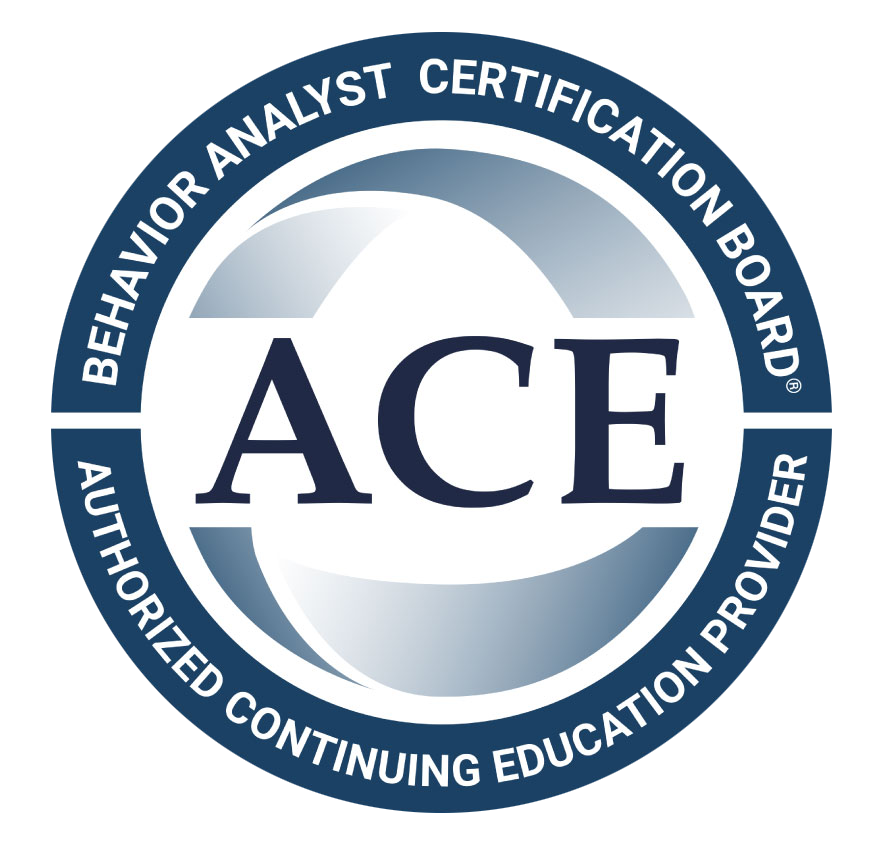For children on the autism spectrum, learning to write can be hard because of the unique challenges they face. Writing is important for school, for expressing feelings, and for thinking more critically. Using Applied Behavior Analysis (ABA) therapy, children can get help in a clear and planned way. ABA therapy uses steps tailored specifically to each child. This helps children with autism get better at writing. With these new writing skills, they can talk more about their ideas and become more independent in their daily lives. This makes their road to academic success much easier.
Importance of Developing Writing Skills in Children with Autism
Writing can help people share their ideas and feelings, contributing significantly to language development. It is also important for learning at school and talking with others. For children with autism, getting better at writing skills can help them have greater independence and more chances in life. It lets them say what they want, finish homework, and stand up for themselves in many places.
Writing also helps the brain grow and improves thinking and problem-solving. When parents and teachers teach writing in a good way, they help autistic children feel more sure of themselves and use their creativity. With this support, these children can work towards reaching their full potential.
Understanding the Challenges Faced by Autistic Children in Writing
Children on the autism spectrum often have some unique challenges when working on writing skills, including generating ideas. They may have trouble with the physical act of writing. Tasks like holding a pencil or making letters the right way can be hard for them. Their hands might not move as they want, so it can slow them down and make it hard to get their work on the page.
On top of that, these children can find it hard to organize what they want to say or use grammar rules. Figuring out how to spell, make a sentence, or pick the right words can feel like too much at times. All of this can lead to not wanting to write and feeling upset. It shows how important it is to give them the right support.
There are also other things, like being anxious or having strong senses, that can make writing even harder for children on the autism spectrum. When a place for writing is not set up in a clear or calm way, it can make the problem bigger. These unique challenges mean they need help that fits just for them. With the right tools and plans, we can make writing development better for these children.
The Role of Writing in Cognitive and Social Development
Writing is not just a simple skill you use at school. It opens the door to the mind and helps kids grow. When children try to put their thoughts into words, they learn to think better. This helps them solve problems and look at things in a new way. These skills are important for academic success and help them understand the world and the people around them.
Social interactions also get better with good writing abilities. With writing, autistic children can share what they feel and think in a clear way. It could be a note, a text, or even a made-up story. This helps them talk with others in a better way and build stronger friendships.
Writing can also help kids become more independent. Autistic children can use writing to make lists or fill out forms on their own. When they learn these practical skills through writing, they feel more sure of themselves. It also helps them take part in daily life with more ease.
ABA Therapy Techniques for Enhancing Writing Abilities
ABA therapy uses clear plans to help kids with autism spectrum learn writing skills. This therapy breaks down each writing task into smaller, manageable steps, which makes the learning process much easier. Kids get positive reinforcement when they do well, so they feel good about their progress.
ABA therapy also uses things like prompting and fading. These give help at the start but slowly let the child do things more on their own. When writing feels fun and doable, children can get better at it over time. These ways of teaching help set a strong start for good writing skills as the child grows up.
Using Task Analysis to Break Down Writing Tasks
Task analysis is an important core component of ABA therapy. It helps break down the writing process into simple, manageable steps. For example, a child learns how to hold a pencil, then how to make letters, and later how to put words together in a sentence. These are taught one after the other.
With this step-by-step approach, task analysis lets kids on the autism spectrum learn the basics before moving on. Taking it slow makes things clearer for them so they do not feel overwhelmed.
As these kids grow more confident, they can go through the whole writing process on their own. Task analysis also lets teachers see every step a child has learned. That makes it easier to spot which areas need work and how to change the teaching plan for better results.
Implementing Prompting and Fading Strategies
Prompting and fading are important tools in behavior analysis. These ways help people learn better. Prompting is used to guide children so they do not get stuck when doing something like writing. There are different kinds, for example:
- Verbal prompts: Telling the child what to do, like “Write your name here.”
- Visual prompts: Giving pictures or written hints to help.
- Physical prompts: Moving the child’s hand so they can make letters.
Fading is used to slowly take away these prompts as the child gets better. Let’s say at first, a helper uses their hand to help the child write. Later, they will only use their voice for help.
This step-by-step of taking away help lets children build up their writing abilities on their own. Using prompting and fading together in behavior analysis helps all children develop skills and feel good about learning to write. Visual prompts also make a big difference as children grow and learn in this way.
Incorporating Technology in ABA Writing Programs
Technology now has a big role in ABA writing programs. It brings new and helpful ways for children with autism to learn. Tablets and learning software help make lessons more fun and open to every kid, providing additional support for unique learning needs. These tools support unique learning needs. They do this by giving apps you can change to fit each child.
Devices like word processors and graphic organizers also help a lot. They give support with spelling, grammar, and putting ideas together. ABA therapy uses technology in a smooth way. It gives children with autism the chance to try writing in fresh ways. At the same time, they build key developmental skills.
Examples of Assistive Writing Technologies
Assistive technology transforms writing instruction for children with autism by simplifying tasks and addressing specific needs. Tools like graphic organizers, word prediction software, and text-to-speech applications play a vital role in bolstering writing abilities by offering scaffolded support.
| Technology Tool | How It Helps |
|---|---|
| Graphic Organizers | Helps organize thoughts and structure writing. |
| Word Prediction Software | Suggests vocabulary and reduces spelling uncertainty. |
| Text-to-Speech Tools | Assists with proofreading by converting text to audio for review. |
| Applications with Visual Prompts | Provides visual aids for better understanding of tasks and instructions. |
When integrated into ABA programs, these tools assist children with autism in producing and improving their written work.
Benefits of Technology-Enhanced Learning for Autistic Students
Technology-enhanced learning can help autistic students in many ways. It gives them writing tools that fit their own needs. These tools can be adjusted to what each student needs. Features like accessibility settings make sure the learning process can include everyone.
For example, using things like visual aids and autocorrect helps with grammar and spelling. The tools take away some of the stress. Writing becomes less scary and more fun through this.
Also, this kind of technology lets students do more on their own. It helps autistic kids get ready to write in different places, like in the classroom or at home. When students feel confident using these tools, it helps their growth in all areas.
Parental and Educator Involvement in Writing Education
Parental and teacher involvement is important for any writing program for autistic children. When parents and teachers work with ABA therapists, they become a team. Parents help by giving support at home. Teachers use the same ways to teach at school too.
Workshops, training, and talking often help everyone know what to do. When everyone works this way, it helps make the therapy last. It also builds a supportive writing environment. This way, children have a place to grow and learn with their writing.
Strategies for Home-Based Writing Activities
Home-based writing activities help kids use the skills they learn in therapy. It is important to have a supportive environment at home to get them involved. Parents can start with small things, like asking children to write shopping lists or to keep a journal about what they do each day, while also identifying areas of improvement in their writing.
To keep it fun, try creative writing activities. You can ask your child to tell a story or to draw pictures, then use those pictures for written descriptions. Using visual supports, such as charts or flashcards, will help give structure to their work.
Positive reinforcement matters a lot. Giving praise or letting your child do a favorite activity when they improve will keep them motivated. With these steps, children will want to practice their writing activities at home often.
Collaboration Techniques Between Therapists and Educators
A collaborative approach between ABA therapists and educators helps autistic children learn better. When both groups have regular talks, like progress meetings or sharing reports, they can work toward the same goals.
Educators can use ABA strategies, such as reinforcement and visual prompts, in the classroom to support what is being done in therapy sessions. ABA therapists can also adjust lesson plans when children face problems in class.
By working together this way, therapists and educators create a clear and strong learning plan for the child. This helps children reach their writing goals.
Conclusion
In the end, helping children with autism build their writing abilities is very important. It plays a big part in their thinking and social growth. Using ABA therapy, technology, and support from parents and teachers can help these kids deal with the problems they have when writing. Breaking bigger tasks into small steps, using helpful strategies, and trying simple tools can make a big difference. It can help them say what they want in a clearer way. The right support helps them feel better and grow in skill and confidence with time. Try to create a space where their writing is welcome, and things get better with practice. If you want advice that fits your needs, reach out for a free talk.
At Connect n Care ABA, we recognize that developing writing abilities is a crucial skill for communication and academic success. Our pediatric ABA therapy goes beyond traditional methods, utilizing evidence-based strategies to target fine motor skills, pre-writing concepts, and the behavioral components necessary for effective writing. We connect with each child's individual learning style, making the process engaging and effective, ultimately helping them express themselves with greater clarity and confidence. Choose Connect n Care ABA to nurture your child's writing potential through compassionate and tailored support.
Frequently Asked Questions
How can parents support their child's writing development at home?
Parents can help their kids write better by making a supportive writing environment at home. To do this, they can use visual supports like charts. They can also boost creativity by adding fun writing into daily activities. Giving positive reinforcement when their child makes progress is also important. Simple things, like making lists or keeping a journal, can help build writing development. This also helps kids feel more sure of themselves as they learn to write.
What are some effective ABA techniques for teaching writing?
Some of the most effective ABA techniques use task analysis, which means breaking writing into simple and manageable steps. Positive reinforcement is also key, as it helps motivate people to keep going. Visual prompts give extra help and support. By using behavior analysis, you can adjust these ways to fit what each person needs. This helps everyone do better and master writing activities over time.
How does assistive technology aid in writing for autistic children?
Assistive technology helps with writing development in many ways. It plays a significant role in using tools such as word prediction software, visual aids, and text-to-speech applications. These tools understand the specific needs that people may have. They make problems with writing much easier to deal with. The learning process can also be more fun and engaging with these tools. This support helps autistic children build their writing abilities and grow more confident.
Sources:
https://www.autismspeaks.org/expert-opinion/autism-and-learning-write
https://education.virginia.edu/research-initiatives/research-centers-labs/research-labs/reading-and-academic-development-research-group/longitudinal-study-reading-writing-social-and-cognitive-development-young-children-autism-spectrum
https://pcdi.org/wp-content/uploads/2023/12/Prompts-prompt-fading-strategies.pdf
https://www.autismparentingmagazine.com/eight-handwriting-strategies-autism-children/









